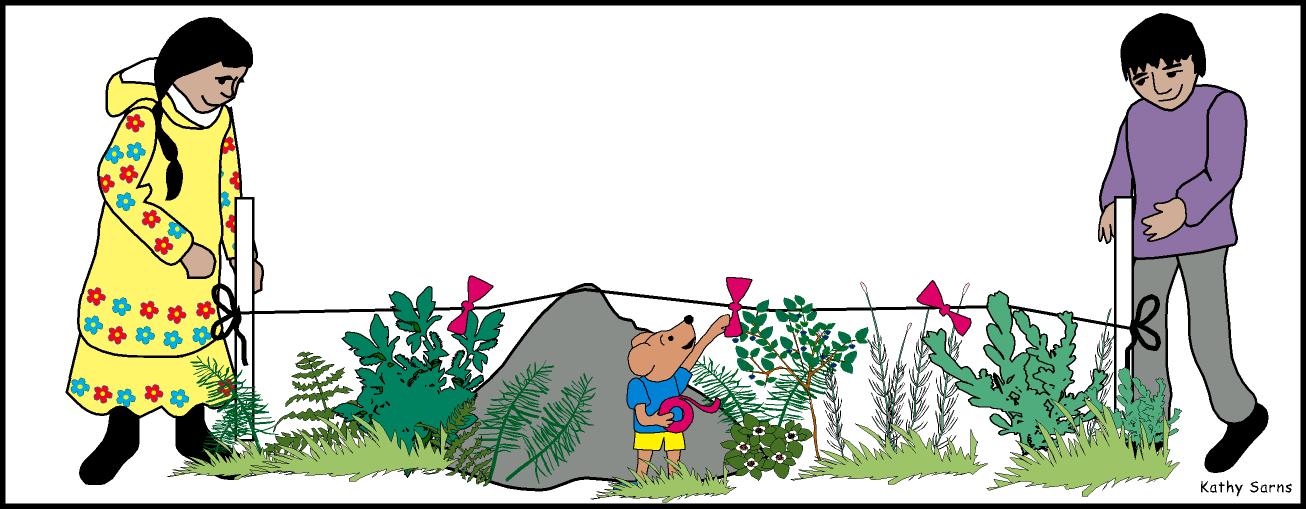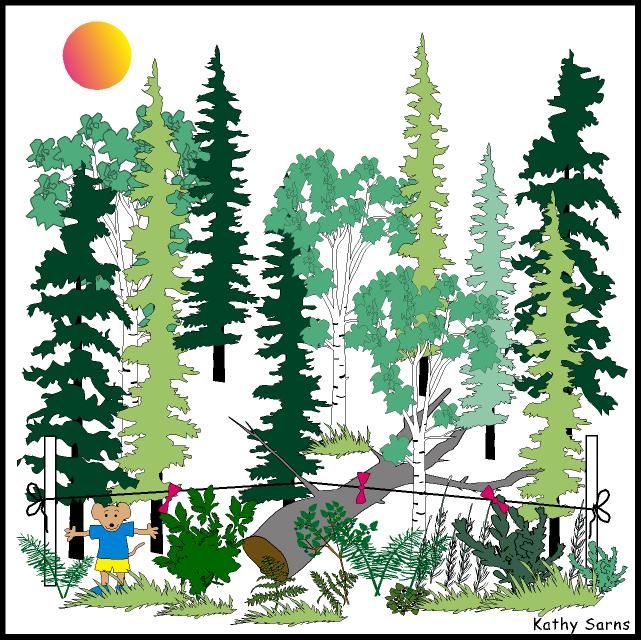
|
 |

| Grade Level: 6-12 |
| Alaska State Content Standards: MA2, MA3, MA6, ME2, ME3, SA15, GeoC3, IV4 |
| Subject: Science, Math |
| Skills: Classification, Generalization, Observation, Research |
| Duration: 2 class period |
| Group Size: individual |
| Setting: outdoors |
| Vocabulary:transect |
OBJECTIVE
Students set up a transect and observe/classify plants found on it.
TEACHING STRATEGY
In this outdoor activity, students prepare transects following their field notebook
guidelines. Students then identify those living and non-living items on their transect.
TEACHER BACKGROUND
A transect is a straight line profile that creates a cross-section of an area to study
plants. Transects are used by botanists and biologists to get representative samples of an area’s vegetative cover. The following transect protocol is an accurate, easy tool for students to use.
MATERIALS
![]() Transect Study Field Worksheet
Transect Study Field Worksheet
![]() "Don't Tear Me Apart or Crush My Home"
"Don't Tear Me Apart or Crush My Home"
24' length of string for every four students (marked into four equal sections)
2 stakes for every 4 students (sticks, rulers, or pencils can also be used)
12" ruler for each student
orange, green, red, or yellow flagging tape
1 field guide to the plants in your area for every 2-4
students (see Teacher Resources)
ADVANCED PREPARATION
Choose a site to visit which has a large enough area for 8-10 24 foot transects.
PROCEDURE
1. Review "Don't Tear Me Apart or Crush My Home".
2. Show students how to set up a transect by stretching their string into a long line along the
ground and staking it at either end. The string is then divided into 4 equal sections, marking the string with flagging tape. Those plants touching the string are identified and recorded. The non-living components that fall directly under the string are also identified.

4. Take students outdoors and have them follow the directions on the worksheet pages.
5. Back in the classroom, have each team make a bar graph to represent the number of herbs, shrubs, mosses, lichens and trees along the transect.
6. Have each group present their data to the class and add it to a large whole class graph on the board.
7. Following the graphs, ask the students the following:
a) What is the average number of plants everyone found?
b) How many different species did the class find?
c) Did everyone find the same things or were transects different?
d) (If appropriate) Why do you think different plants were found in different areas? Why aren’t (or are) they the same?
e) Did any of the results surprise you?
f) What was the most interesting thing you observed?
g) Do you think if you made a longer transect, maybe 96 feet long (4 times what you did) would you find different things? Why or why not?
h) Why do you think transects may be important tools scientists use when studying tundra or boreal forests?
EVALUATION
Leave transects in place on the study site.
After you have completed your follow-up discussions, have each team trade
their notebooks and graphs with another group. Revisit the area and have each
group identify another group's transect based on what they reported. Ask the following questions again:
a) Did anything surprise you?
b) What was the most interesting thing you observed?
c) Do you think if you made a longer transect, maybe 96 feet long (4 times
what you did) would you find different things? Why or why not?
d) Why do you think transects may be important
tools scientists use when studying tundra or boreal forests?
REFERENCES
Adapted with permission from Alaska Wildlife Week Unit 5 Alaska’s Forests… More Than Just
Trees, by Susan Quinlan, Alaska Department of Fish and Game, 1987 and Alaska
Wildlife Week Unit 6: Alaska’s Living Tundra, by Susan Quinlan, Alaska Department of Fish and Game, 1988.
| Printable version | Add to favorites | Make Alaska FWS my homepage |
| Site designed and maintained jointly by the USFWS Alaska Region Division of Information Resource Management (IRM) and External Affairs (EA). |